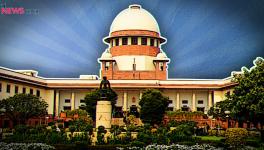SC Redefines Concept of Family: Same-sex Couples Entitled to Protection of Law
The Supreme Court (SC) has ruled that same-sex couples and other non-traditional families, like unmarried partnerships and single parents, are entitled to legal protection and social benefits.
In a significant judgement, Deepika Singh vs Central Administrative Tribunal and Others, delivered on August 16 but uploaded on Sunday, a Bench comprising Justices DY Chandrachud and AS Bopanna observed that “familial relationships may take the form of domestic, unmarried partnerships or queer relationships” and such “atypical” families are also entitled to equal protection of law, LiveLaw reported.
The judgement assumes significance with activists demanding the recognition of LGBT marriages and civil unions and allowing live-in couples to adopt after the SC decriminalised Section 377 of the Indian Penal Code, which had criminalised sexual activities “against the order of nature”, including homosexuality.
While granting the relief of maternity leave to Singh regardless of the fact that she had availed childcare leave for the children of her husband from his earlier marriage, the Bench observed that the predominant understanding of the concept of a “family” both in the law and society—that it consists of a single, unchanging unit with a mother and a father (who remain constant over time) and their children—
“ignores several circumstances which may lead to a change in one’s familial structure and that many families do not conform to this expectation”.
“Familial relationships may take the form of domestic, unmarried partnerships or queer relationships. A household may be a single parent household for any number of reasons, including the death of a spouse, separation, or divorce. Similarly, the guardians and caretakers (who traditionally occupy the roles of ‘mother’ and ‘father’) of children may change with remarriage, adoption, or fostering,” the apex court further observed.
Observing that such “manifestations” of love and of families may not be typical but they are as “real as their traditional counterparts”, the Justices said: “Such atypical manifestations of the family unit are equally deserving not only of protection under law but also of the benefits available under social welfare legislation.”
Noting that the “the black letter of the law” must not be relied upon to disadvantage families different from traditional ones, the top court observed: “The same undoubtedly holds true for women who take on the role of motherhood in ways that may not find a place in the popular imagination.”
The judgment also opens the doors for legal rights for women who avail surrogacy, adoption or assisted reproductive technologies.
Rule 43(1) of the Central Civil Service Rules, 1972, restricts maternity leave only with respect to two surviving children. Appellant Singh’s husband had two children from his previous marriage and she had earlier availed childcare leave for her non-biological child. When Singh became a mother, she was denied maternity leave under Rule 43.
However, the SC observed unless Rule 43 is given a “purposive interpretation” in terms of the Maternity Benefit Act, 1961, and Article 15—which discrimination on grounds only of religion, race, caste, sex, place of birth or any of them—the “object and intent of the grant of maternity leave would simply be defeated”.
Since maternity leave under the 1972 Act is intended to facilitate the continuance of women in the workplace, the SC observed that it is a “harsh reality that but for such provisions, many women would be compelled by social circumstances to give up work on the birth of a child if they are not granted leave and other facilitative measures”.
“No employer can perceive child birth as detracting from the purpose of employment. Child birth has to be construed in the context of employment as a natural incident of life and hence, the provisions for maternity leave must be construed in that perspective,” the Bench observed.
Noting that women are forced to take a “disproportionate burden of childcare”, the court said that although certain provisions of the 1972 Act have enabled women to enter the paid workforce, “women continue to bear the primary responsibility for child care”.
Therefore, the grant of childcare leave to the appellant “cannot be used to disentitle her to maternity leave under Rule 43 of the Rules of 1972”, the court added.
The case indicates, the SC observed, that Singh’s family structure changed when she took on a parental role with respect to her husband’s biological children from his previous marriage.
“When the appellant applied to PGIMER [Post Graduate Institute of Medical Education & Research, Chandigarh] for maternity leave, PGIMER was faced with facts that the law may not have envisaged or adequately accounted for. When courts are confronted with such situations, they would do well to attempt to give effect to the purpose of the law in question rather than to prevent its application,” the Bench said.
Get the latest reports & analysis with people's perspective on Protests, movements & deep analytical videos, discussions of the current affairs in your Telegram app. Subscribe to NewsClick's Telegram channel & get Real-Time updates on stories, as they get published on our website.
























